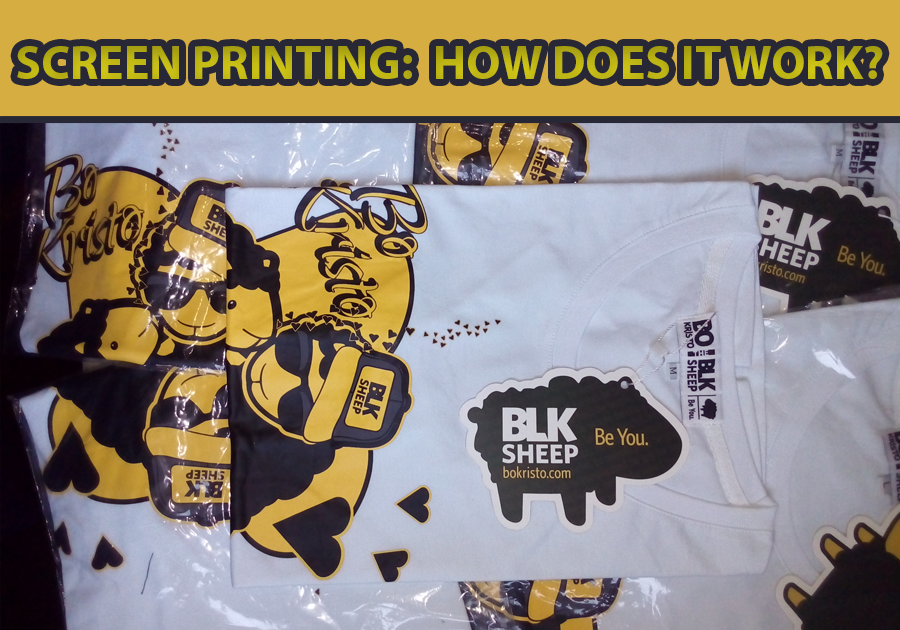Eco-Conscious / Eco-Friendly, Mens Clothing, Style, Urban Clothing, Women Clothing
Screen Printing: How Does it Work?
A synopsis of screen printing’s history.
Around AD 221, screen-printing emerged in China as a technique for printing images on textiles. Following this, the Japanese started making imagery using basic stenciling techniques. At the time, mesh was woven from human hair, and stencils were made by cutting paper. To get the ink through the mesh and onto the fabric, stiff brushes were utilized. Silk screens were employed in France in the 17th century as a method of printing on fabric. The ink was still being forced through the mesh with stiff brushes. Although it is unknown who started the method, stretching silk over a frame to support stencils.
Squeegees were developed in the early 20th century as a technique to push ink through the screen mesh. A group of artists in New York started experimenting with screen printing as a creative medium on paper in 1938. They came up with the word “serigraphy.” Screen printing was established as a modern art medium in the 1960s by Pop Artists like Peter Blake, Andy Warhol, and Robert Rauschenberg who included it into their practices.
Screen Printing As An Acceptable Art Form.
The unique aspect of screen printing, also known as silkscreen, is that it transfers an image from a stencil to paper. The printer then precisely prints this pattern onto the fabric, which calls for specialized abilities and understanding of how each piece should seem when finished. Paper, glass, metal, and plastic are just a few of the surfaces that may be printed on with the adaptable printing method known as screen printing. Additionally, it’s not just for fabrics or t-shirts! Posters, pottery, and even fine art prints come to life with screen printing. Why? due to the accuracy of the color matching.
Screen printing allows you to achieve whatever color you desire! That covers hues that fall beyond of CMYK’s gamut as well as extremely saturated colors. There is no contest – it easily outperforms all other methods in terms of precise matching capability. To ensure that your brand matches the colors in your logo, screen printing also uses Pantone colors. If you want a uniform appearance on all marketing products, such as shirts or hats, this is crucial.
The Screen Printing Process?
On the surface that will be printed on, a screen is first applied. After that, ink is forced through the screen and onto the ground below using a squeegee.
The design will be transferred to the surface in the shape of your choice of color because the screen obscures everything but the negative space of the pattern.
The design is now finished after the screen has been removed.







Your writing has a way of resonating with me on a deep level. I appreciate the honesty and authenticity you bring to every post. Thank you for sharing your journey with us.
Thank you so much—that means a lot. I think of writing a bit like screen printing: every post is like pulling ink through a screen, layer by layer, revealing something honest underneath. It’s a careful process—sometimes messy, sometimes imperfect—but it’s all about being intentional and letting the real image come through. I’m grateful it resonates with you. -BO KRISTO
I have been surfing online more than three hours these days, but I by no means discovered any attention-grabbing article like yours. It’s lovely worth enough for me. In my opinion, if all website owners and bloggers made good content as you probably did, the net can be much more helpful than ever before. “Dreams have as much influence as actions.” by Stephane Mallarme.
Thank you so much for your thoughtful and generous comment. I’m truly glad to hear that you found the content about “Screen Printing: How Does it Work?” to be of valuable—it means a lot. I completely agree with the quote you shared by Stéphane Mallarmé; dreams do shape our vision just as much as our actions shape our reality. If this piece sparked even a bit of inspiration or reflection, then it’s done its job. Thanks again for taking the time to share your thoughts!